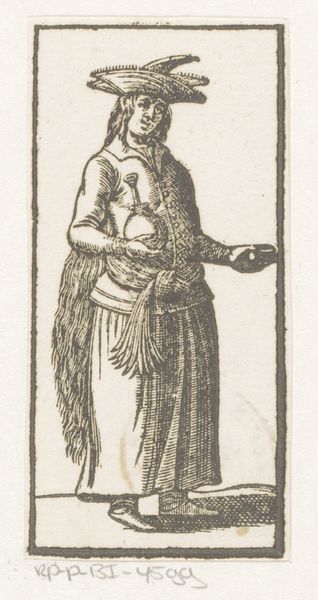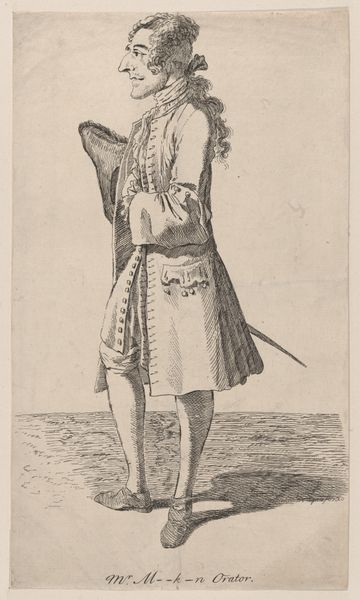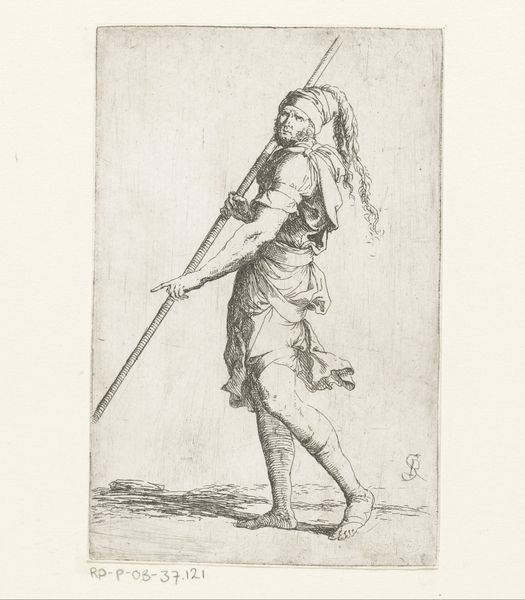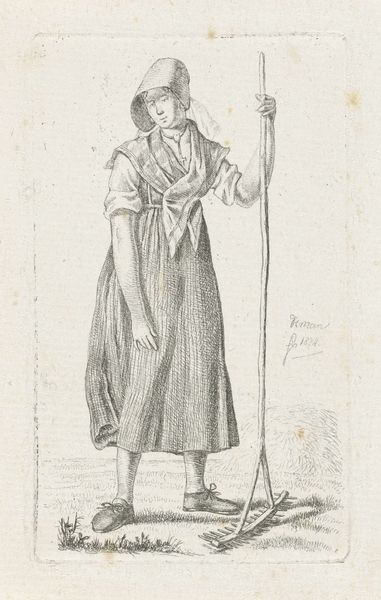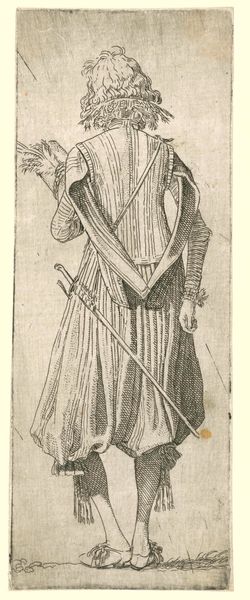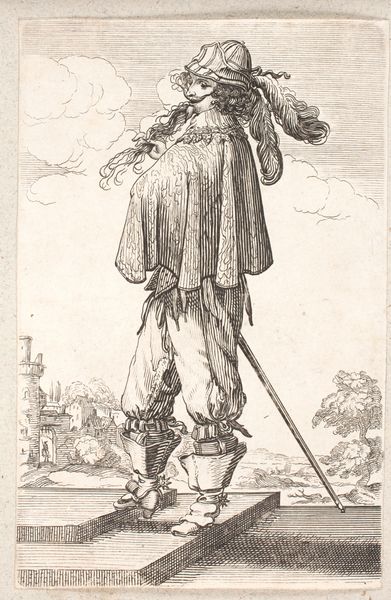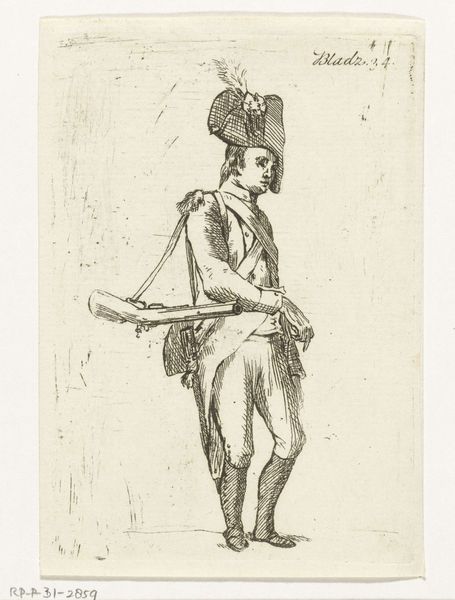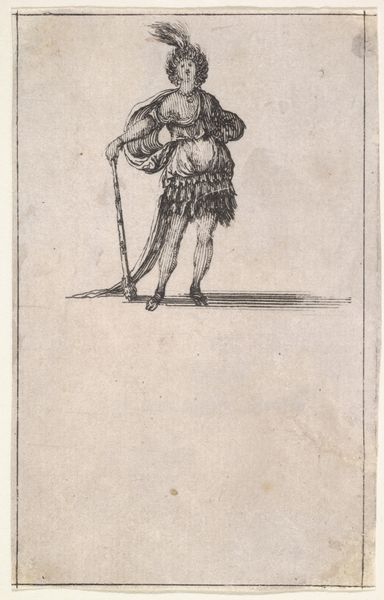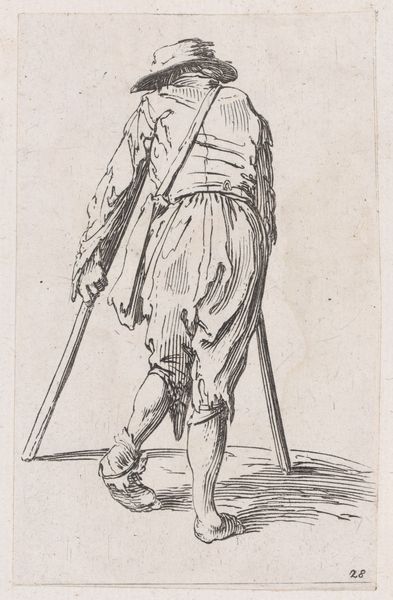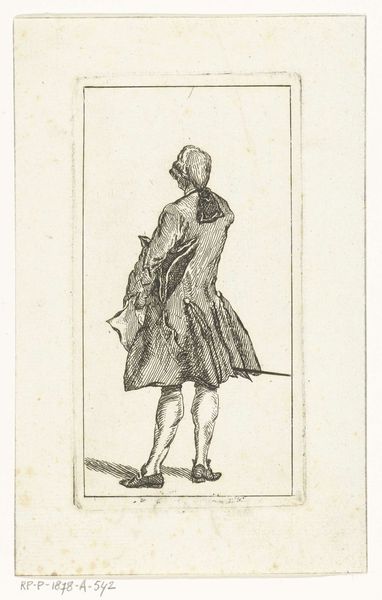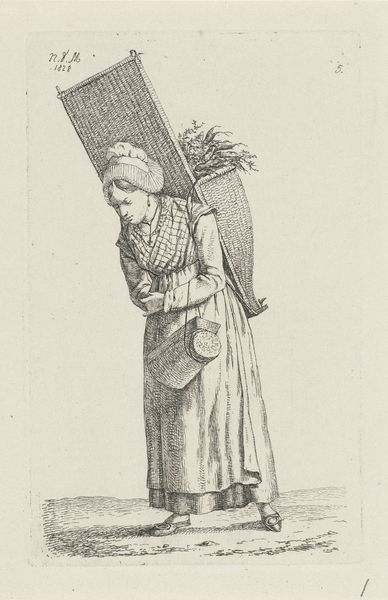
A Portrait of an Ash-Coloured Woman from the Territory around the Niger River, Holding Reeds. 1583
0:00
0:00
drawing, ink
#
portrait
#
drawing
#
figuration
#
11_renaissance
#
ink
#
northern-renaissance
Dimensions: 219 mm (height) x 120 mm (width) (bladmaal)
Curator: This is Melchior Lorck's 1583 ink drawing, "A Portrait of an Ash-Coloured Woman from the Territory around the Niger River, Holding Reeds." It's currently housed here at the SMK. Editor: Right, my initial response is quietness. Something about the figure’s stillness. The rendering, especially that precise cross-hatching, amplifies that meditative mood. What do you think? Curator: I find the composition quite remarkable, given the constraints of the medium. Lorck employs line economy to convey form and texture, creating an engaging study of visual otherness within the Northern Renaissance. Semiotically, the reeds could symbolize both fragility and resilience. Editor: Mmm, “visual otherness.” I love how that positions her as an object of study. The artist's gaze is unmistakable. And it's strange, isn't it? How the detail devoted to the face and figure is... clinical. The expression is almost vacant, which is eerie next to that carefully rendered reed in her left hand. Curator: The horizontality of the reedy terrain creates an anchor. The cross-hatching employed creates tone shifts; shadow that builds up towards the base supports her as a compositional object within Lorck’s greater intention of mapping other worlds. Editor: You know, that makes me wonder about how this image was received at the time. Was it shocking? Inspiring? It's this collision of meticulous observation and blatant cultural disconnect, this cool rendering of what must have been an extraordinary encounter. Curator: Consider the cultural and artistic framework of 16th-century Europe, and it is possible to posit that Lorck's approach was influenced by contemporary theories of ethnographic representation, combined with nascent humanist principles of observation. Editor: Interesting thought. You know, in its own stark way, this artwork functions like a powerful artifact—evidence of encounters, filtered through layers of perspective and prejudice, isn't it? Curator: It provides a moment, through form and line, to reconsider both how and what it meant to “see” in 1583. Editor: Absolutely. This image stays with you, raising questions about who gets to do the looking.
Comments
No comments
Be the first to comment and join the conversation on the ultimate creative platform.
